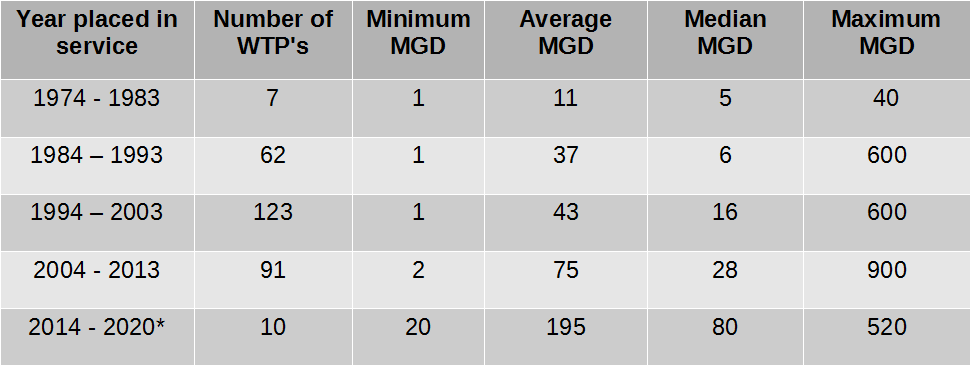The article below was written by Jim Lauria posted to Linkedin. This is a great article on the potential future growth of the cannabis market and role ozone oxidation may play in this industry.
Cannabis: A Unique Perspective
The cannabis industry is riding sky-high and heading for the clouds as legalization expands and markets grow. Cannabis growers are also poised to lead agriculture in water use efficiency and gain an upper hand in long-term contests over access to precious water.
I have a unique perspective on cannabis. For one thing, I have been studying water use in the crop since researching my first article on the topic in 2017, and continuing through the current day. In fact, I recently co-authored an article for Ozone News with Tony Sacco of Spartan Environmental Technologies on the many uses of ozone in cannabis production and processing, and presented on the subject at the International Ozone Association’s 2021 U.S. conference.
But my unique perspective is much older, and much more unique. Back in the 1980s, I was an environmental engineer at one of the largest sugar mills in the world, which also operated the largest furnace in the Florida county where we were located. I would often get a call from the county asking for help burning caches of old documents. Imagine my surprise when one of those document destruction runs turned out to be a 6-ton load of confiscated marijuana that the county sheriff needed to destroy! Let’s just say that our stack emissions that day may well have set a record for the world’s biggest bong.
In all seriousness, most states—including Florida—have legalized some form of cannabis use or decriminalized the drug, opening markets to many very sophisticated growers. The pressure to deliver the most crop per drop, especially in irrigated crop production areas like the West and parts of the South, make water too precious to apply to crops that can be rainfed, and will likely tip the balance toward high-value crops like cannabis. The water industry has much to learn from producers who have spent decades fine-tuning their water use efficiency and growing techniques—and a lot to gain from exploring how our technologies fit this top-dollar crop.
Booming Market
One of the biggest drivers behind cannabis’ inevitable domination of water resources is the staggering value of the crop. According to Grand View Research, the global market for legal marijuana was estimated at $9.6 billion in 2020 and is expected to expand at a compound annual growth rate of 26.7% from 2001 through 2028. Cannabis is already the largest crop in California—the state that produces one-third of the country’s vegetables and two-thirds of its fruit. At $11 to $17 billion per year and 60 to 70% of the nation’s pot sales, California’s cannabis crop dwarfs the number-two agricultural product, the state’s $6.7 billion milk and cheese industry.
You probably noticed the disparity between the Grand View figures and the California numbers. The difference is the illegal cannabis market. According to Ted Grantham, co-director of the cannabis program at the University of California, Berkeley, legal cannabis farms represent just 20 to 25% of the state’s total cannabis operations. That means there is a vast number of small, unregulated cannabis farms in the state, many of which are tapping water supplies illegally. What we don’t know is how many farms or how much water, though indications in rural counties in California’s Emerald Triangle are that water demand for cannabis is so high that it is affecting streams and residential wells. Though those operations are off-the-books, their water management tactics will also need to incorporate efficient water technologies, too.
Astronomical Returns
With such massive revenue numbers, it’s no surprise that cannabis cultivation generates huge returns on water—astronomical “crop per drop.” A study by the Denver University Law Review found that cannabis production in Colorado returned 22 cents to $6.67 per gallon of water used, and compared that to potatoes—another huge Colorado crop—which returned 2 to 3 cents per gallon.
Part of the disparity goes back to the value of the crop. Think of it—you’re comparing a crop that’s sold by the gram to a commodity that’s marketed in 10-pound bags…and wholesaled in 50-to-100-pound increments. In January 2021, cannabis flower wholesaled at $1,721 per pound in Colorado, according to MJBiz Daily, while 100 pounds of Colorado russet potatoes sold for $17.00 wholesale. That’s a 100x difference. Ten thousand percent.
With returns like that, cannabis producers will make a strong case for creating the highest and best economic use for irrigation water where they have the rights. And efficiency will likely stay on the high side of the range, or continue to improve, as cannabis production is increasingly driven inside controlled environments like greenhouses or high tunnels. Improved yields and quality from indoor production, along with neighbor complaints about unpleasant odor from outdoor grows, will cement indoor production as the preferred approach to cannabis cultivation.
There, too, cannabis is the new king. According to Agrilyst, cannabis yields $112 per square foot in value in the greenhouse, compared to $64 for indoor greens and $22 for indoor strawberries.
Technology Driven
As cannabis producers invest in indoor production—a substantial commitment—and the legal market demands the kind of quality and traceability that wine and food buyers do, cannabis growers will be held to Good Agricultural Practices and beyond. To comply with those demands and maximize their profits through increased efficiency, those growers will seek the best in water application, treatment and reuse technologies.
This is no longer the neighborhood supplier growing in a blacked-out basement.
Maintaining basic safety will demand sanitation. For sanitation-in-place maintenance of growing facilities and equipment, we are seeing significant interest in ozone-injecting sanitation carts and wall-mounted ozone sanitation systems, which allow growers to effectively sanitize without the need for (or dangers of) steaming hot water. Within drip irrigation or hydroponic water delivery systems, ozone and other sanitation agents can be injected to control biofilm, which can plug emitters and valves, as well as harbor pathogens.
Ozone or air can also be injected into irrigation water to aerate roots through systems like Mazzei AirJection, a process that has been proven by agronomists around the world to improve yield and quality in vegetables, fruits, and a wide range of commodities. As competition tightens and branded cannabis becomes as coveted as favorite wine labels, we can expect to see deep interest in yield and quality improvement techniques.
At the end of the irrigation line, ozone, advanced oxidation process (AOP) systems, and sophisticated filtration will be needed to permit the reuse and recycling of water, or treat wastewater for discharge.
My exploration of the applications for ozone in cannabis production have even pointed to opportunities for gaseous ozone in cleaning cannabis flower—at rates low enough to avoid damaging the product—or neutralizing odorous terpenes in air before exhausting it into the environment.
Further Research
On a state-by-state basis, cannabis offers tremendous opportunities for innovative water technologies. And many cannabis industry experts expect federal approval in the U.S. in the future, as we’ve seen in Canada. Federal approval will be important not just because it allows producers and buyers access to the banking system, or even interstate marketing of cannabis that will reward top growers. It will open the door to research and development across the country—and we can bet that some of the research will advance water efficiency and highlight the role of water technology in delivering high, profitable yields of safe product.
In the modern-day land rush that is the emerging legal cannabis industry, the crop is likely to find its way to the head of the line when it comes to high-efficiency, high-return use of water resources. The skill of the growers, the value of the crop and growing demand for top-quality, even branded cannabis, will follow in the footsteps of the wine industry. We in the water industry will be wise to teach cannabis growers about the remarkable tools we put at their disposal to help them improve quality and efficiency, and also to learn from the many innovators in cannabis production how careful water management can turn every drop of water into green.



Ozone generators have a place in cannabis cultivation. However, chlorine dioxide is leading the way. It’s cost-effective and easy to us. Chlorine dioxide tablets can be shipped anywhere and mixed with water to sanitize the largest cannabis farms very efficiently.
One of the leaders in research and development is https://www.safrax.com
True,
Also be aware and transparent that chlorine dioxide is not superior to ozone, it simply has more marketing dollars spent due to the higher and ongoing costs associated, therefore profits are greater and marketing dollars are greater.
This is the challenge that ozone also faces in many other applications. While ozone is a superior alternative to many chemicals, the marketing behind it will always be lagging due to to the lack of on-going costs/profits to/from the consumer.